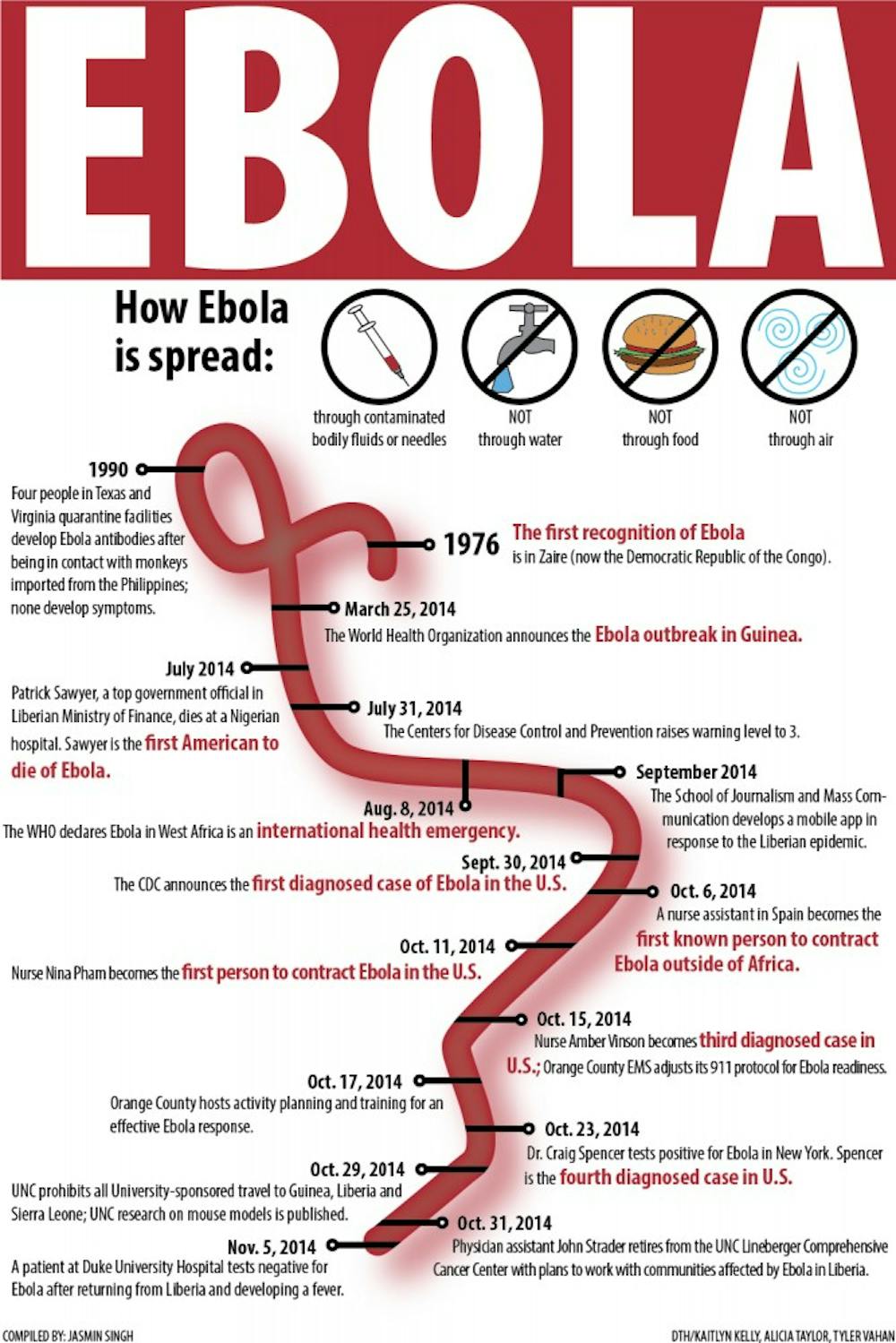UNC researchers, along with researchers from other institutions, have developed a mouse model that reproduces symptoms similar to those of humans infected by Ebola. The work was published in the academic journal Science in October.
The study is a collaboration between UNC, the University of Washington and the National Institute of Health Rocky Mountain Laboratories in Hamilton, Mont.
Mark Heise, one of four co-directors of the project at UNC and professor at UNC School of Medicine, said the study will contribute to testing therapies and vaccines for Ebola and help understand how genetic variation affects susceptibility to the virus.
“It gives us information on how variation in host genes affects susceptibility to Ebola,” said Marty Ferris, also a co-director and a professor. “Nobody has done that before.”
He said the study is a team effort, bringing expertise from different places.
Fernando Pardo Manuel de Villena, a co-director of the project and a professor, said collaboration is crucial to the success of the research.
“That’s how science typically works,” said Pardo Manuel de Villena. “You have expertise from different aspects and different institutions, and not every institution has everything the same.”
Heise said they chose mice instead of other animals to formulate the model because mice are relatively cheap, and over the years, research using mice has led to the creation of more advanced tools to understand the rodent’s genetics.



